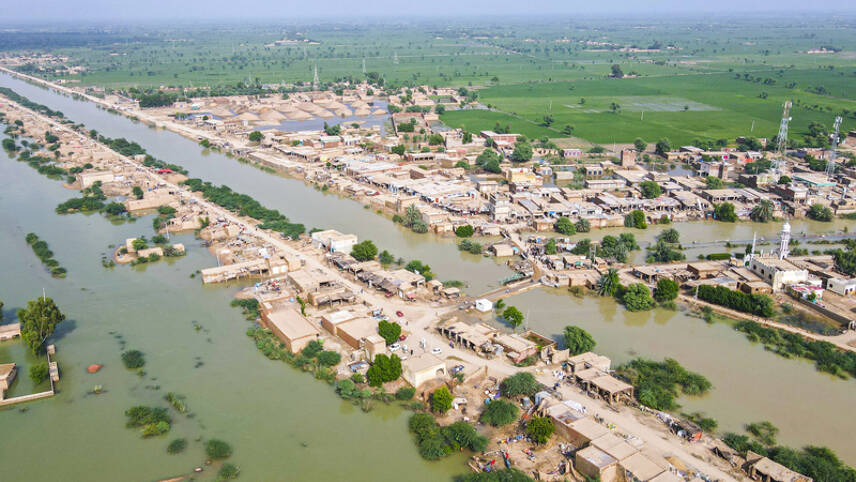Register for free and continue reading
Join our growing army of changemakers and get unlimited access to our premium content

Pictured: Flooding in Pakistan in summer was described as unprecedented
Published today (3 November) as part of its string of annual reports ahead of international climate summits, the UN Environment Programme’s 2022 Adaptation Report charts how countries are improving their own adaptation planning and how global financial flows to support adaptation are scaling.
Climate scientists have repeatedly emphasised that, even if emissions were to decrease sharply and rapidly enough to meet the Paris Agreement, some physical climate impacts are already ‘baked in’, and we need to adapt to them. The greater the level of warming and the more severe changes in weather patterns are, the greater the need to adapt becomes, and the more challenging and expensive.
The report notes that there has been some progress in the development of national adaptation plans. 165 (84%) of nations involved in climate diplomacy through the UN have produced such a plan, up from 79% this time last year. The vast majority of these plans have been drawn up with the necessary considerations on how climate impacts are likely to be felt more severely by historically and presently disadvantaged groups.
However, half of the nations with a plan do not have more than one instrument in place to deliver their ambitions. Moreover, only 65 of the 165 nations with a national adaptation plan have included numerical, time-bound targets. Without such targets, tracking progress is challenging. It is also challenging to see which warming scenarios the plans are accounting for.
Beyond the mixed quality of national adaptation plans, the report raises the alarm on the state of international adaptation finance. It has often been stated that the majority of international climate finance goes to climate mitigation (reducing emissions), leaving adaptation underfunded, and that, overall, the Global North has continually failed to meet its climate finance commitments to the Global South. A $100bn annual pledge was made in 2009 and has never been met; the peak was $83bn provided in 2020.
The new report stated that international adaptation flows to developing nations need to be at least five times higher, and up to ten times higher, each year than they are at present. It warns that the financing gap is likely to continue to widen, with the impacts of physical climate impacts crystalising more rapidly than expected and with the scaling of finance proving slow. Physical impacts mentioned in the report include the ongoing drought in the Horn of Africa and unprecedented flooding across South Asia. At least 3,700 people have died in South Asian countries since January in flooding, including more than 1,700 in Pakistan.
International adaptation finance flows to developing countries are estimated to have reached $29bn in 2020. The estimated annual need, however, is at least $160bn annually in 2030.
“Without a step change in support, adaptation actions could be outstripped by accelerating climate risks, which would further widen the adaptation implementation gap,” the report warns. It calls on nations to better consider the co-benefits of adaptation and mitigation, and to collectively scale solutions to both issues, such as mangrove, salt marsh and peatland restoration.
Delivering this joined-up, accelerated and scaled-up approach will require strong political will, the UNEP is stating. It is urging nations not to let immediate challenges relating to the fallout of the pandemic and Russia’s ongoing war in Ukraine “derail” international climate diplomacy.


Please login or Register to leave a comment.